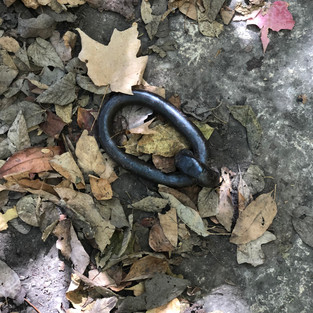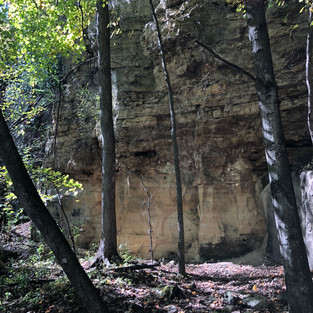Day Trip to MN Bluff Country: Frontenac State Park
- Kevin and Roxanne

- Oct 4, 2020
- 3 min read

A sunny and crisp fall day made for perfect hiking along the St. Croix River at Frontenac State Park. Just 10 miles south of Red Wing, we were not the only ones who headed to this state park this weekend. The parking lot was more than full, and a ranger was directing the overflow to just about anywhere parking was possible.
You should know that the next couple of weeks in October will be prime fall color in Red Wing and the Frontenac area, as the colors are just coming out there and lagging the color in the Twin Cities by a week or two.

Frontenac State Park is known for its picturesque views of the wooded St. Croix River Valley and a wide variety of birds the part attracts, however, we paid absolutely zero attention to birds during our time there. People have been attracted to this beautiful area for thousands of years beginning as early as 400 BC. Artifacts of the Hopewell culture have been discovered, as well as Dakota and Fox people who lived in the region. Later as a site of a fort (Fort Beauharnois), a fur trading post, and a limestone quarry, the quarry stone walls, and some remnants are still visible on the Lower Bluffside Trail.
We hiked part of the interpretative trail before heading out on the Lower Bluffside Trail and looped back on the Upper Bluffside Trail. The lower trail was consistently narrow and required a lot of side-stepping off the trail to let others by. The north end of the trail goes down to the river and is worth a short stop. But be ready for some heavy breathing during the hike back up, which climbs over 400 feet to the top of the bluff.

The St. Croix River is also referred to as Lake Pepin in this area, a 22-mile long widened stretch of the river. The lake was named after Jean Pepin who settled on its shores in the late 1600s after exploring the Great Lakes. Cormac’s favorite camp—Camp Pepin, is just a few miles south and on the Wisconsin side of the river. We are hoping that he can resume his camp experiences in 2021, post-COVID.

There are a number of scenic viewpoints to stop at, including In-Yan-Teopa (Dakota for “rock with opening”). This rocky limestone arch is believed to have played some significance in American Indian religious practices.
Frontenac State Park surrounds the historic town of Old Frontenac. Listed on the National Register of Historic Places, this enclave of historic homes has no downtown, no retail, no sidewalks. Information at the state park Old Frontenac overlook said that this was Minnesota’s first resort town, attracting visitors from across the country. For more information on this unique historic village: see this CBS video segment.

photo credit: Commonwealth Properties
To the south of Old Frontenac, we were surprised to stumble upon this large French chateau structure. Built by the Ursuline Sisters of the Central Province in the 1890s as a girl’s school, Villa Maria Academy, the school was in operation until the late 1960’s. in 2019, Villa Maria opened as an event center and in 2021, lodging will be added.
By my count, this was our 18th Minnesota State Park visit this year. We are really getting our money's worth from our park pass this year! (According to Cormac, it feels like we have been to 45. We figured out today during our hike that he typically exaggerates by a factor of 2.5x. Our hike took 5 hours!)






















Comments